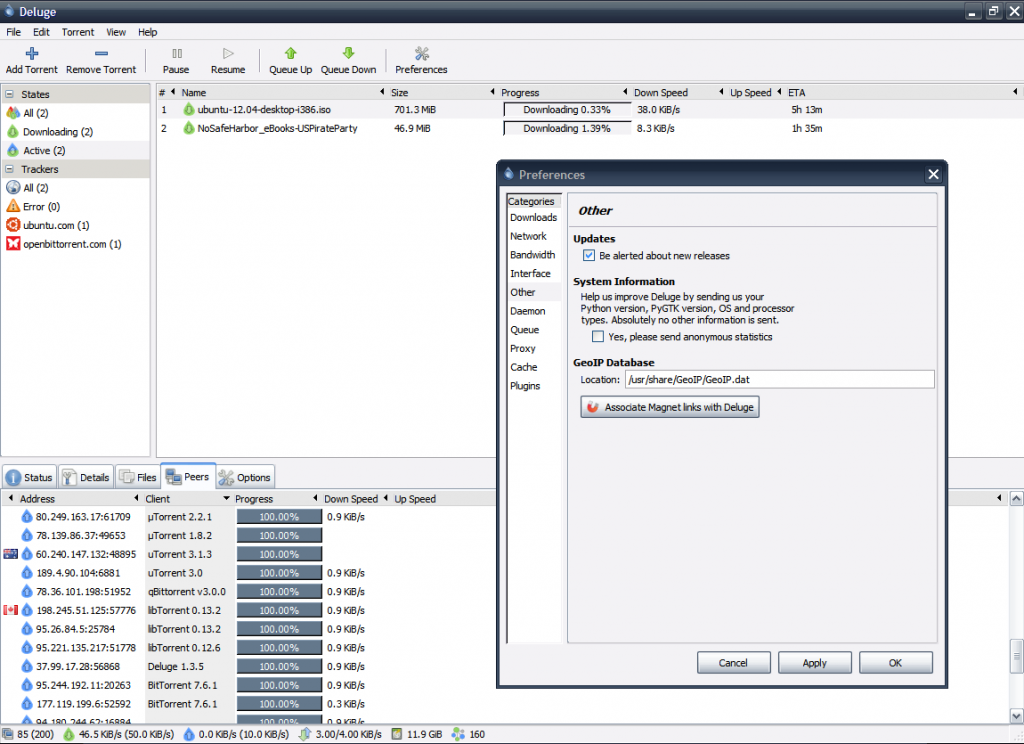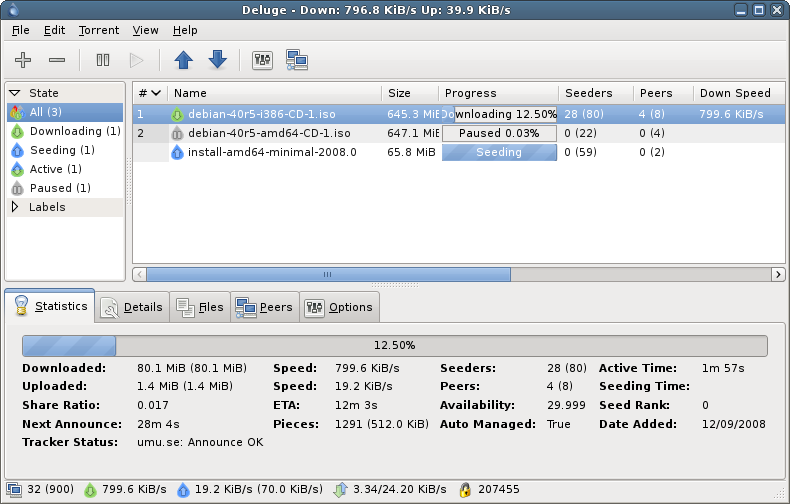

- #HEADLESS DELUGE CLIENT ON SLACKWARE INSTALL#
- #HEADLESS DELUGE CLIENT ON SLACKWARE PASSWORD#
- #HEADLESS DELUGE CLIENT ON SLACKWARE DOWNLOAD#
- #HEADLESS DELUGE CLIENT ON SLACKWARE TORRENT#
Add your user records in the following pattern. The file is located at / var/lib/deluge/.config/deluge/auth. You need to add login records for your users. You can do that by looking up the process and killing it.

Change to your Deluge user, and open up the Deluge console.

In order to allow connections to your server from other computers, you need to enable remote connections.
#HEADLESS DELUGE CLIENT ON SLACKWARE INSTALL#
$ sudo apt install deluged deluge-console You’re finally ready to install deluge on your server. $ sudo ufw allow in on tun0įinally, allow contact to your VPN’s DNS server. $ sudo ufw default deny incomingĪllow all connections from the computer itself and the local network. Now, tell UFW to block everything by default. Once you have UFW, you can start setting up your rules. Start by downloading UFW to make firewall management much easier. Thankfully, that’s something that’s very easy to do on Linux systems with a firewall. If you’re using torrents behind a VPN, your probably want a reliable killswitch that will cut off your connection of you lose contact with the VPN. $ sudo systemctl enable Create A VPN Killswitch The process will take a while, so be patient. When everything looks correct, click the button to flash your image. In the first section, select your image file. The program breaks the process down into three simple steps. Once you have Etcher, open it up or install it.
#HEADLESS DELUGE CLIENT ON SLACKWARE DOWNLOAD#
Download the correct version for your OS. If you don’t already have a preferred tool for flashing images to SD cards, there’s a great cross-platform application, Etcher, that you can use on any operating system to easily flash your image. Then, insert your MicroSD card into your computer. You’re not going to need a desktop environment on your server. Go over to the Raspberry Pi Foundation’s download page, and get the latest release of Raspbian Lite.
#HEADLESS DELUGE CLIENT ON SLACKWARE TORRENT#
It’s also the perfect option for setting up the Pi as torrent server. Raspbian is the default operating system for the Raspberry Pi.
#HEADLESS DELUGE CLIENT ON SLACKWARE PASSWORD#
If username and password provided, configures ovpn file automatically Variables, Volumes, and Ports Environment Variables Variable v /your/openvpn/nf:/config/client.ovpn \


 0 kommentar(er)
0 kommentar(er)
